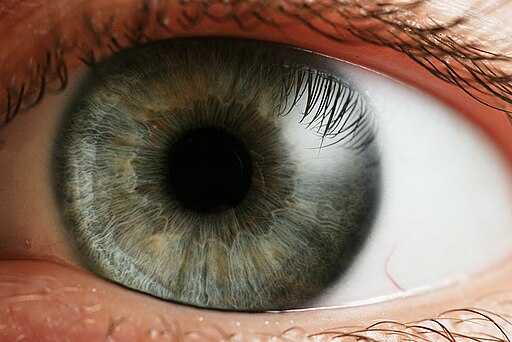
I recently stumbled upon a study that led me down a metaphorical rabbit-hole, drawing me deeper and deeper through information I’d never considered before. The study itself was small, involving just 250 women of childbearing age, and looked specifically at caffeine intake and its effects on the hormone estrogen. I was drawn in because the researchers actually thought to check the effect of a woman’s race on the outcome, which is rare. And as it turns out, race had a pretty big impact on the results.
The study found that caffeine definitely affected a woman’s estrogen level, albeit to a minor degree. The really interesting part, though, was how it broke down by race. The Caucasian women in the study saw their estrogen level drop slightly after ingesting just 200 mg of caffeine a day. Similarly, black women saw their estrogen level drop, although less significantly. But the big news was the Asian women who actually saw their estrogen level rise. The rise in estrogen was not large enough to affect their fertility, but it did attract attention. Researchers tried to control for the racial disparity, by looking at age, diet, exercise, and whether or not the woman smoked, but the results remained unchanged. It made me wonder why Asian women would have such a completely different reaction to caffeine compared with other races. What the heck was so different about Asians?
It turns out that Asian populations do have a considerably different metabolism than the rest of us. For example, while many people of Asian descent remain thin, they have a greater tendency to develop obesity-related complications, like high blood pressure and diabetes. So, even though they are usually slimmer and fitter-looking than the rest of us, their internal organs could be telling an entirely different story.
Researchers cannot yet explain why this happens, but the distribution of body fat is very different depending on your race. Causasian and black people typically accumulate fat in their hips and legs first, and their visceral organs only later, but the opposite appears to be true for Asians. Because fat is so easily stored in their internal organs, even a seemingly slight Asian may already be showing signs of a serious metabolic disorder when looked at from the inside.
It is suspected that this is a genetic adaptation that evolved as a way to protect against starvation. If so, it would have been helpful in centuries past when food scarcity was a more regular occurrence. However, in our modern, calorie-rich environment, it creates problems, and not just because it increases their tendency towards metabolic disorders. It also affects fertility. For Asian women with hormonal imbalances like PCOS tend to develop higher insulin and testosterone levels than other women with PCOS, further complicating the condition. Asian women also seem to be more sensitive to hormone injections in general, responding more quickly and dramatically to any hormone increases.
This brings to mind another common problem among Asians: their inability to properly metabolize alcohol. If you have Asian friends, you may notice that they don’t tend to drink much. This may be partly cultural, but it’s also true that around 30% of Asians lack one of the enzymes needed to properly breakdown alcohol. As a result, they experience facial flushing after just a drink or two, which keeps them from indulging further.
With such a significant difference in their ability to metabolize caffeine, alcohol and hormones, and a known tendency to produce abdominal and visceral fat more quickly than other races, I wonder that Asians aren’t singled out more often in scientific studies. For that matter, what about all the other potential racial differences in health outcomes? For example, it’s well known that sickle cell anemia occurs more frequently in descendants of African populations, and that cystic fibrosis occurs more frequently in descendants of European populations. There are probably many other health problems, not to mention the drugs used to treat them, that work completely differently in select racial groups. Scientific researchers seem to be only slowly awakening to the significance of this.
Of course, race isn’t the only variation among humans. The even more obvious one is sex, and here, we also find big discrepancies. Men and women are known to react to many drugs very differently. For example, it has recently been found that women metabolize sleeping pills much more slowly than men, and as a result, the FDA has reduced the recommended dosage of Ambien for women by half to help prevent overdose. It doesn’t end there. Medical practitioners know that women tend to wake up from anaesthesia faster than men during surgical procedures, and have more severe side effects to other common drugs, like cholesterol-lowering drugs, and even anti-histamines and over-the-counter aspirin. The exception is high blood pressure medication, which actually appears to work better in women than in men.
Yet most research continues to focus on one group only: Caucasian people, and Caucasian men in particular. In most cases, we simply don’t know the true effect of a drug on someone from an Indian or Middle Eastern background, because they’ve never been included in scientific studies. Or, if they were included, their potential reactions were never isolated and observed. The situation is even worse for women, who are typically excluded from drug trials completely because their monthly hormone fluctuations make their reaction to drugs less predictable, and therefore more confusing.
This bias towards Caucasian men in scientific research is a real weakness for Western medicine, and produces a giant blind spot when it comes to treatment. Just think how much more effective Western medicine could be if they considered different racial and sexual reactions in their drug trials and treatment plans. I’ve always thought this was one of the strengths of Chinese medicine, for TCM practitioners have always been taught to consider the particular strengths and weaknesses of each individual when deciding on diagnosis and treatment. It’s never been a one-size-fits-all system the way that Western medicine is, and Western medicine would do well to try to copy this approach. With the advent of individual genetic testing, that time may be coming soon. I would say it’s about time.


